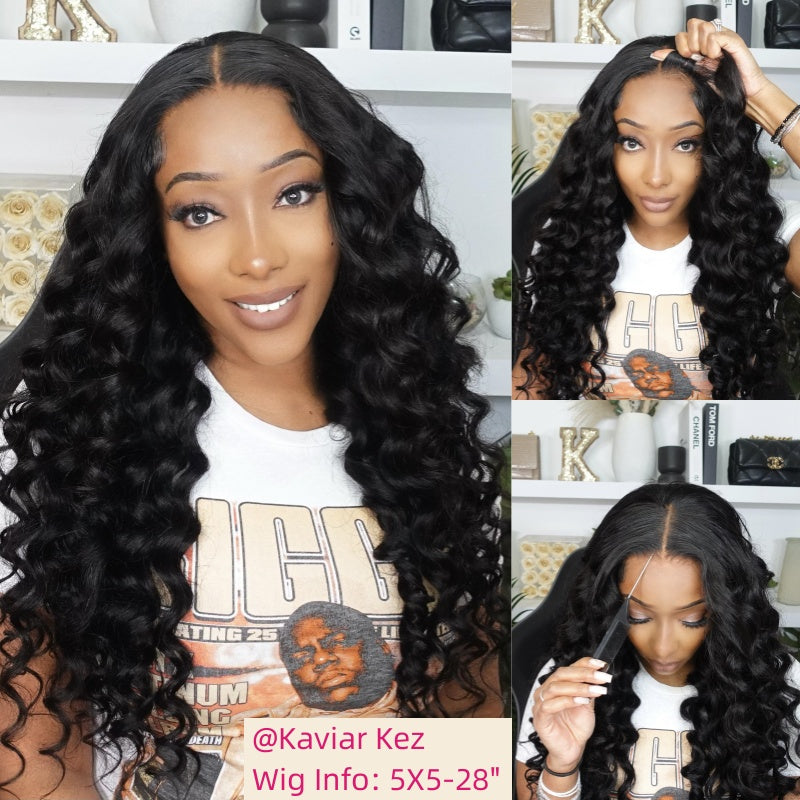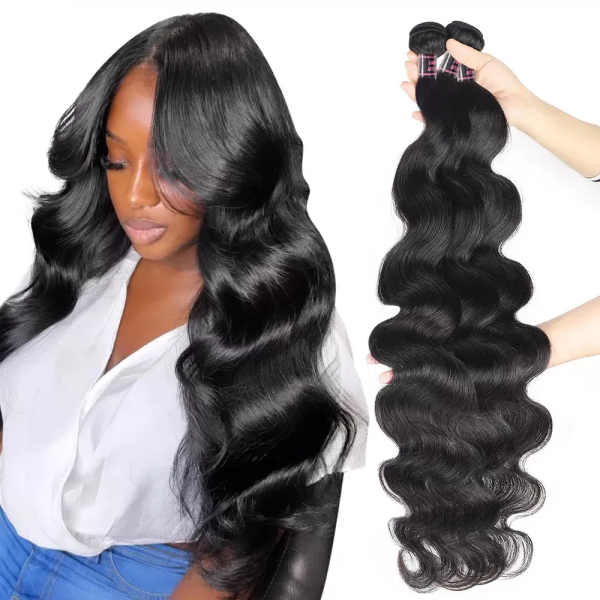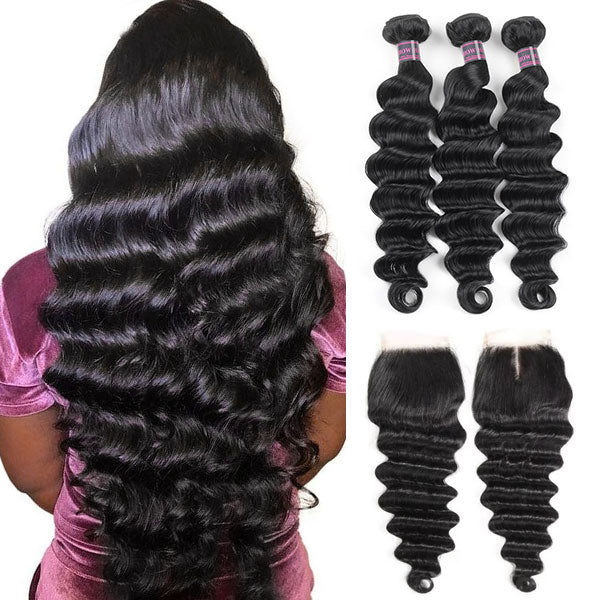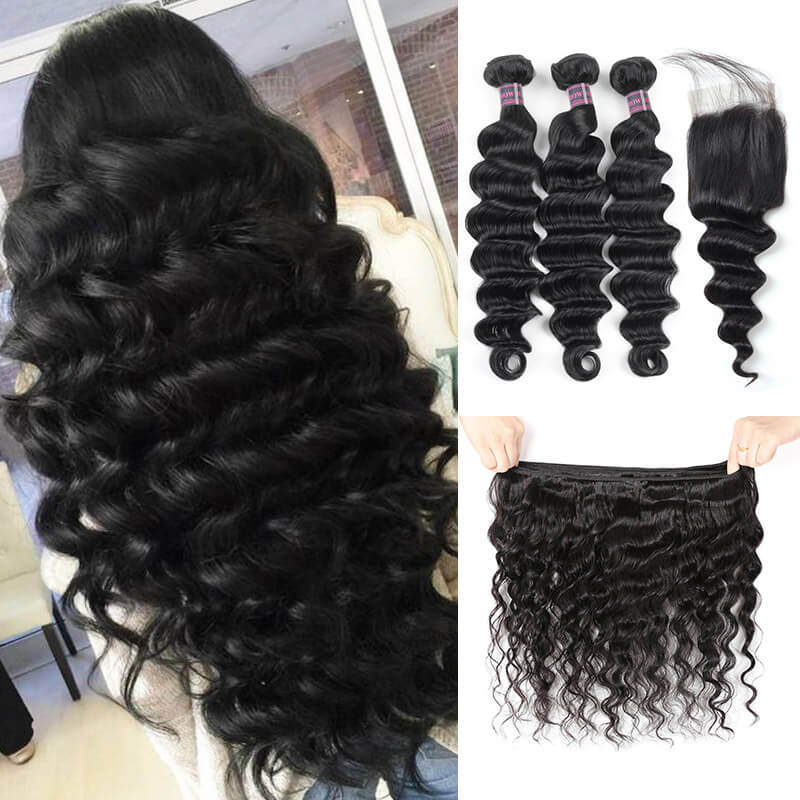Is Synthetic or Human Hair Wigs Better? A Comprehensive Comparison
When it comes to choosing a wig, one of the most important decisions you'll make is whether to opt for synthetic or human hair. Both types of wigs have their advantages and disadvantages, and the right choice for you will depend on your individual needs, preferences, and lifestyle. In this blog post, we'll take a deep dive into the world of wigs, exploring the key differences between synthetic and human hair options. We'll discuss factors such as appearance, durability, maintenance, and cost, helping you make an informed decision that best suits your unique requirements.
A Quick Comparison Sheet
| Feature | Synthetic Wigs | Human Hair Wigs |
|---|---|---|
| Cost | - Lower cost ($50 - $400) - Budget-friendly option |
- Higher cost ($200 - $2000+) - Long-term investment |
| Styling | - Pre-styled - Cannot be re-styled or heat styled - Limited in styling options |
- Very versatile - Can be re-styled with heat tools - Cut, colored, permed like real hair |
| Appearance | - Slightly less natural look - Shine may appear more artificial |
- Most natural look and feel - Moves and blends like real hair |
| Durability | - Lasts 4-6 months with care - Fibers break down over time |
- Can last 12+ months with proper care - Maintains style and appearance longer |
| Maintenance | - Low maintenance overall - Wash and air dry |
- Requires more regular upkeep - Washing, conditioning, styling - Heat protectants if heat styling |
Understanding Synthetic Wigs
Synthetic wigs have come a long way since their inception, offering a cost-effective and low-maintenance alternative to human hair wigs. These wigs are crafted from man-made fibers, such as polyester, acrylic, or nylon, which are engineered to closely resemble the appearance and texture of real hair.
The Benefits of Choosing a Synthetic Wig
-
Budget-Friendly: One of the most appealing aspects of synthetic wigs is their affordability. They are significantly less expensive than human hair wigs, making them an excellent option for those who want to experiment with different styles or colors without breaking the bank.
-
Effortless Maintenance: Synthetic wigs are designed to maintain their style and shape, even after washing. This means you can enjoy a consistent look with minimal styling effort. Simply wash, dry, and wear – it's that easy!
-
Resilient Fibers: The man-made fibers used in synthetic wigs are inherently stronger than human hair, making them more resistant to damage from environmental factors like sun exposure, humidity, and wind. This durability translates to a wig that maintains its appearance for longer periods.
-
Style Variety: Synthetic wigs come in an extensive range of colors, styles, and lengths, allowing you to experiment with various looks without committing to a permanent change. From sleek and straight to bouncy curls, there's a synthetic wig to suit every preference and occasion.
Potential Drawbacks of Synthetic Wigs
-
Less Natural Appearance: While synthetic fibers have greatly improved in replicating the look and feel of human hair, they may still have a slightly less natural appearance, especially in certain lighting conditions. High-quality synthetic wigs, however, can be nearly indistinguishable from human hair wigs.
-
Limited Styling Options: One of the trade-offs of synthetic wigs is that they are pre-styled and cannot be heat-styled like human hair wigs. This means you're somewhat limited to the original style of the wig, with minimal room for customization. However, many synthetic wigs come in a variety of styles, so you can still find one that suits your desired look.
-
Shorter Lifespan: Although synthetic wigs are durable, they typically have a shorter lifespan compared to human hair wigs. With regular use, a synthetic wig can last around 4-6 months, after which it may start to lose its shape, shine, and overall appearance.

What about Human Hair Wigs?
For those seeking the most natural look and feel, human hair wigs are the go-to choice. These wigs are made from real human hair that has been collected, processed, and crafted into a wig. The hair is sourced from various regions around the world, including India, Europe, and China, each with its unique texture and characteristics.
Advantages of Human Hair Wigs
-
Natural Appearance: Human hair wigs provide the most natural-looking results, as they blend seamlessly with your own hair and move in a similar manner. The hair fibers have a natural shine and texture that is difficult to replicate with synthetic materials, ensuring a more authentic and believable appearance.
-
Versatile Styling: Unlike synthetic wigs, human hair wigs can be styled just like your natural hair. You can use heat tools, such as curling irons or straighteners, to create different looks and customize your style. This versatility allows you to change your hairstyle as often as you like, adapting to different occasions or moods.
-
Long-lasting: With proper care and maintenance, human hair wigs can last up to a year or more, making them a worthwhile investment for those who wear wigs regularly. The longevity of human hair wigs is due to the strength and resilience of the natural hair fibers, which can withstand daily styling and environmental factors.
-
Color Treatment: Human hair wigs can be color-treated, allowing you to achieve a perfect match to your natural hair color or experiment with new shades. This flexibility is particularly beneficial for those who want to seamlessly blend their wig with their natural hair or who enjoy changing their hair color frequently.
-
Texture Customization: Human hair wigs can be cut, layered, and textured to suit your individual preferences. This customization allows you to achieve a wig that perfectly complements your face shape, style, and personal taste.

Disadvantages of Human Hair Wigs
-
Higher Cost: Due to the sourcing and processing of real human hair, these wigs are significantly more expensive than synthetic alternatives. The cost of a human hair wig can range from several hundred to several thousand dollars, depending on the quality, length, and origin of the hair.
-
High Maintenance: Human hair wigs require more upkeep than synthetic wigs, as they need to be washed, conditioned, and styled regularly to maintain their appearance. Just like natural hair, human hair wigs can become dry, tangled, or frizzy if not properly cared for, requiring a dedicated hair care routine.
-
Moisture Sensitivity: Just like natural hair, human hair wigs are susceptible to humidity and moisture, which can cause frizz and affect the overall style. In high humidity environments, your human hair wig may require more frequent touch-ups and styling to maintain its desired appearance.
-
Potential Allergic Reactions: In rare cases, some individuals may experience allergic reactions to the materials used in processing human hair wigs, such as dyes or chemicals. If you have sensitive skin or are prone to allergies, it's essential to choose a reputable wig manufacturer and consider any potential sensitivities before purchasing a human hair wig.
Considerations When Choosing Human Hair Wigs
-
Investment: Due to the sourcing and processing of real human hair, these wigs are significantly more expensive than synthetic alternatives. It's essential to consider your budget and how often you plan to wear the wig when making your decision.
-
Maintenance Requirements: Human hair wigs require more upkeep than synthetic wigs, as they need to be washed, conditioned, and styled regularly to maintain their appearance. This can be time-consuming and may require additional hair care products.
-
Reaction to Humidity: Just like natural hair, human hair wigs are susceptible to humidity and moisture, which can cause frizz and affect the overall style. If you live in a humid climate or engage in activities that expose you to moisture, you may need to take extra steps to protect your wig.
Factors to Consider When Choosing Between Synthetic and Human Hair Wigs
- Lifestyle and Activities: Take stock of your daily routine and regular activities. If you lead an energetic lifestyle, play sports, or live in a hot humid climate, a synthetic wig may be the more practical, fuss-free choice to maintain.
- Budget and Cost-Effectiveness: Figure out your wig budget and weigh the long-term value of each option. Synthetic wigs cost less initially, but human hair wigs are a pricier investment that can last longer with proper care.
- Desired Styling Options: If you like playing with different hairstyles and using hot tools, a human hair wig offers more styling flexibility and possibilities. If you want a low-maintenance, ready-to-wear look, a synthetic wig may be the better pick.
- Natural Appearance Preferences: Consider the realism level you aim for with your wig. Human hair wigs provide the most natural look and feel, while synthetic wigs can give a more dramatic or avant-garde appearance.
- Allergies and Sensitivities: Some people may have allergies or sensitivities to certain synthetic fibers. If you have a history of allergies or have experienced irritation from synthetics, a human hair wig may be the more comfortable choice.
Wig Care and Maintenance Tips
Regardless of whether you choose a synthetic or human hair wig, proper care and maintenance are essential to ensure the longevity and appearance of your wig.
Caring for Synthetic Wigs
- Wash your wig using a specialized synthetic wig shampoo and conditioner, following the manufacturer's instructions.
- Avoid using heat tools on synthetic wigs, as this can damage the fibers and alter the wig's shape.
- Store your wig on a wig stand or mannequin head when not in use to help maintain its shape.
Maintaining Human Hair Wigs
- Wash your human hair wig using a gentle, sulfate-free shampoo and conditioner designed for color-treated hair.
- Use a wide-tooth comb or wig brush to gently detangle your wig, starting from the ends and working your way up to the roots.
- Apply a light moisturizing oil or serum to keep the hair soft, shiny, and manageable.
- When using heat tools, apply a heat protectant spray and use the lowest temperature setting possible to minimize damage.
Choose the Best Wig for Your Needs
Synthetic and human hair wigs both have their benefits. Synthetic wigs provide affordable convenience while human hair offers customizable styling. Consider your budget, lifestyle and hair goals when deciding between the two wig options. With proper care, you can get beautiful use out of either synthetic or human hair wigs for months to come!
FAQs about Synthetic and Human Hair Wigs
How do I know if a wig is made with real human hair?
100% human hair wigs will clearly state they are made of Remy or virgin human hair on the packaging. They are also substantially higher priced than synthetic wigs. When you touch the strands, real human hair feels softer and bouncier than synthetic.
Can you dye synthetic wigs?
No, dyeing requires the use of harsh chemicals that will damage the synthetic fibers. There are temporary colored synthetic wig sprays that can work for costume or occasional color changes.
What is the best human hair for wigs?
Virgin and Remy human hair is highest quality for wigs because the cuticles are kept intact and the hairDIRECTION is all the same. This results in soft, natural movement and styling versatility. Good human hair wig brands will indicate it is Remy or virgin hair.
Should I choose synthetic or human hair for my first wig?
For your first wig, synthetic is recommended. Synthetic wigs are beginner-friendly, affordable and you can find a style that suits you. Once you get comfortable wearing wigs, you may want to invest in a human hair wig for increased versatility.
How do I blend my wig with my natural hair?
Choose a wig close to your hair color and texture. Trim the wig hairline for a natural appearance. Use concealer, finishing powder and styling tricks like swooped bangs or layering to seamlessly blend with your bio hair.
Read More
- Wig Styles Decoded: Find Your Perfect Match & Rock the Look!
- Transparent Lace vs. HD Lace Wigs: Which is Better?
- The Wig World Explained: A Guide to Different Types of Wigs
- Can You Wear a Lace Front Wig Without Glue?











